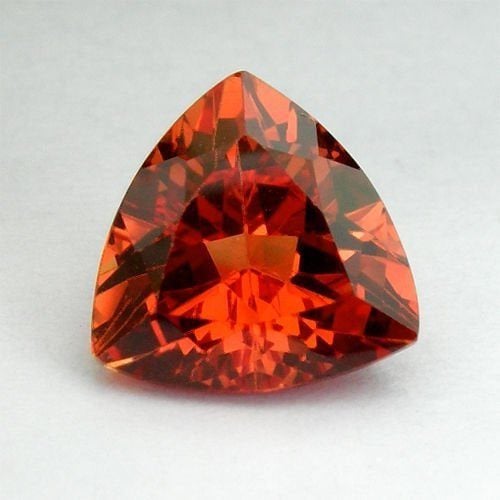What are Gemstone Enhancements?
Gemstone enhancements improve the appearance and wearability of gems. Learn about the most commonly used procedures and frequently treated types of gems.
3 Minute Read
Does Too Much Information on Gemstone Enhancements Hurt Sales?
The topic of gemstone enhancements is controversial and vast. Some in the industry feel too much information will confuse customers and hurt sales.
For example, some procedures involve subjects such as the physics of light response to molecular structure. They argue that there's no need to disclose treatments that are indistinguishable from natural gem formation processes. Others in the industry feel the public's right to know outweighs these concerns.
Interested in this topic?
This article is also a part of our Professional Gemologist Certification Course, in the unit Advanced Gemology.
What should gemologists do?
The International Gem Society (ISG) recommends that gemologists follow these guidelines when discussing enhancements with customers or writing appraisals and reports.
Natural Gems and Enhanced Gems
First, let me clarify the following terms:
- Natural gems form in the Earth. Treatments after mining don't change their status as natural gems.
- Synthetic gems are made under lab conditions that mimic natural formation processes, only greatly accelerated.
Treatments or enhancements occur after the gems are formed. Thus, an enhanced gemstone isn't necessarily a synthetic stone, nor are synthetics necessarily enhanced gemstones.
Common Gemstone Enhancements
Heat Treatment
The most common form of enhancement is heating. For example, jewelers should inform their customers that rubies and sapphires are "probably heat treated," since heating is so common for corundum gems.
"Probably" doesn't sound very professional. However, heat enhancement so closely resembles what happens in nature that you can't always tell if gems have received the treatment after mining. Sometimes, microscopic examinations can reveal evidence of heating. Otherwise, you can't tell if the heating occurred before or after mining.
(Again, let me clarify. Heat is one of the conditions that cause gems to form, whether in the ground or in a lab. Heating that occurs during gem formation isn't an enhancement. On the other hand, heating applied after gem formation counts as an enhancement).
Another often heat-treated gem is aquamarine. Most of this material has a natural green tint. If heated properly after mining, these gems may turn pure blue. However, sometimes aquamarine crystals do come out of the ground a pure blue. Natural heating underground and artificial heating after mining can produce identical results. For this reason, jewelers should describe any pure blue aquamarine as "probably heat treated."
Radiation
Now you know why some in the gem industry are nervous about full disclosure. Radiation is a scary word. Revealing that a gem received radiation will likely drive away customers. But just as with heating, radiation enhancements duplicate what happens in nature. During their formation, radioactive elements affect many gem crystals. That doesn't mean these gems are radioactive or otherwise harmful.
Most blue topaz gems get their color in a two-step enhancement process. First, radiation modifies electron sharing between certain atoms in the crystal structure of colorless topaz, which turns the stone brown. Next, heating creates a stable blue color.
Oiling
Some gems, notably emeralds, have internal fractures. Light reflection off their surfaces seriously affects the clarity and brilliance of these stones. Simply filling these fractures with a substance with similar optical properties makes these tiny cavities transparent. The difference in the appearance of the finished gem can often be startling! Many different kinds of oils or fillers can be used on emeralds, and many people in the gem trade have long debated their relative merits.
Unlike heat and radiation, oiling gemstones doesn't mimic a process that occurs in nature. To gem cutters, oiling poses a serious problem, because those tiny fractures represent structural weaknesses they must consider in the cutting process. Oil-masked fractures increase the risk of damaging a gem during cutting. To gem owners, oiling is well worthwhile, since the oil filler isn't visible and simply allows the natural beauty of the stone to shine. For them, gemstone enhancements like oiling increase both the emotional and monetary value of the gem.
Jewelers should tell buyers that oiled gems need special care. For example, frequently washing dishes while wearing such a stone can make it less brilliant. Vigorous cleaning methods, like using heat or an ultrasonic system, can be disastrous.
Dyeing and Sealing
Less expensive gems can receive enhancements, too. Dyes are common treatments for stones such as black onyx. Jewelers often seal porous materials like turquoise with surface coatings, such as paraffin wax, so body oils won't cause discoloration.
Lead Glass Filling
Diamonds, rubies, and sapphires can be filled with lead glass to improve their clarity. Some gems that combine natural with synthetic material may also be called "hybrid gems."
Donald Clark, CSM IMG
Donald Clark, CSM founded the International Gem Society in 1998. Donald started in the gem and jewelry industry in 1976. He received his formal gemology training from the Gemological Institute of America (GIA) and the American Society of Gemcutters (ASG). The letters “CSM” after his name stood for Certified Supreme Master Gemcutter, a designation of Wykoff’s ASG which has often been referred to as the doctorate of gem cutting. The American Society of Gemcutters only had 54 people reach this level. Along with dozens of articles for leading trade magazines, Donald authored the book “Modern Faceting, the Easy Way.”
International Gem Society
Related Articles
What is Gemstone Cleavage?
Gemstone Optical Properties
Gemstone Magnetism: The Forgotten Property
Gemstone Physical Properties
Latest Articles
800 Years of Mogok: A Celebration in Tenuous Times
What is the Average Gemstone Faceting Yield?
Pyroxmangite Value, Price, and Jewelry Information
How to Identify Emerald Simulants and Synthetics
Never Stop Learning
When you join the IGS community, you get trusted diamond & gemstone information when you need it.
Get Gemology Insights
Get started with the International Gem Society’s free guide to gemstone identification. Join our weekly newsletter & get a free copy of the Gem ID Checklist!
